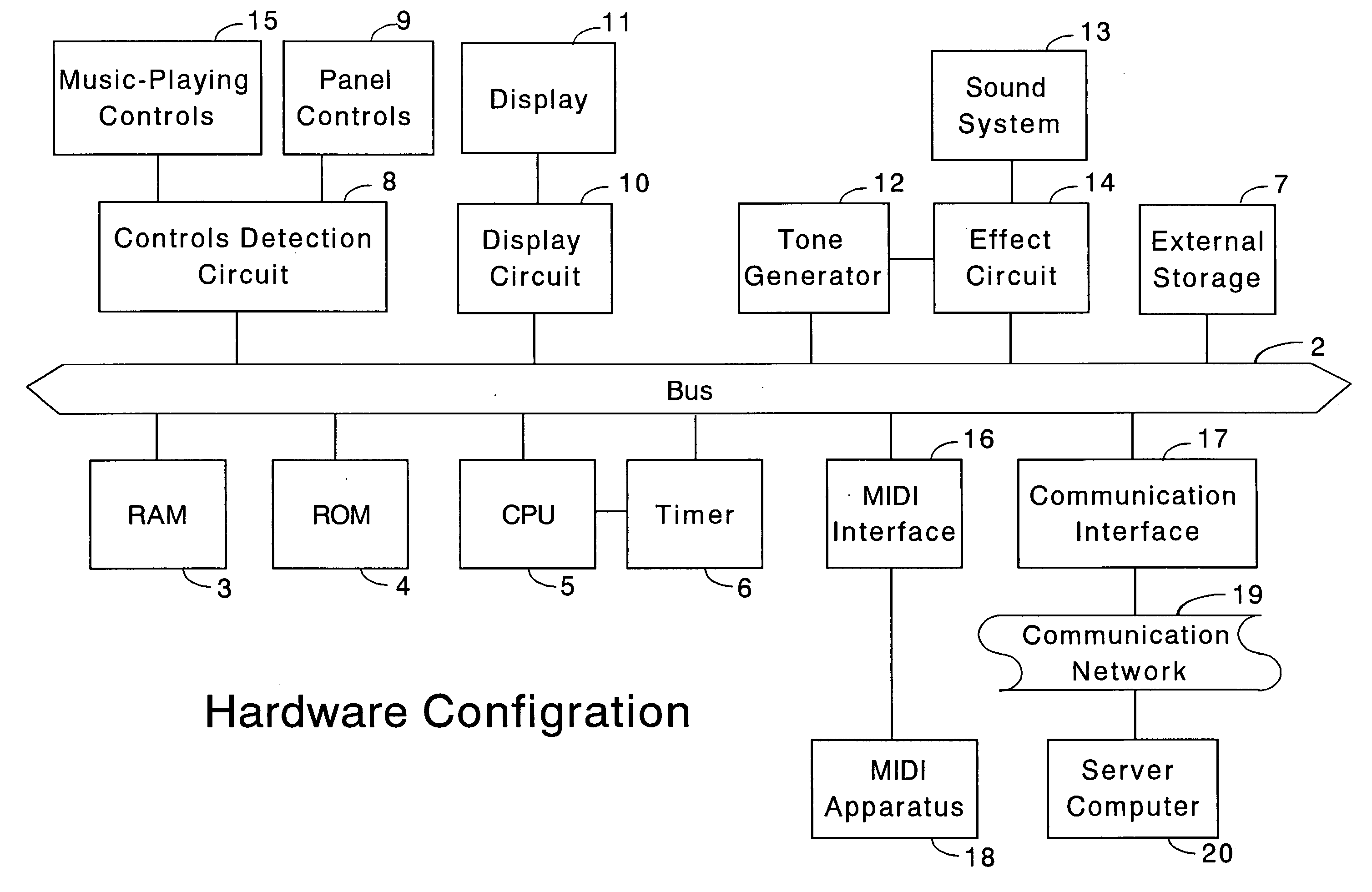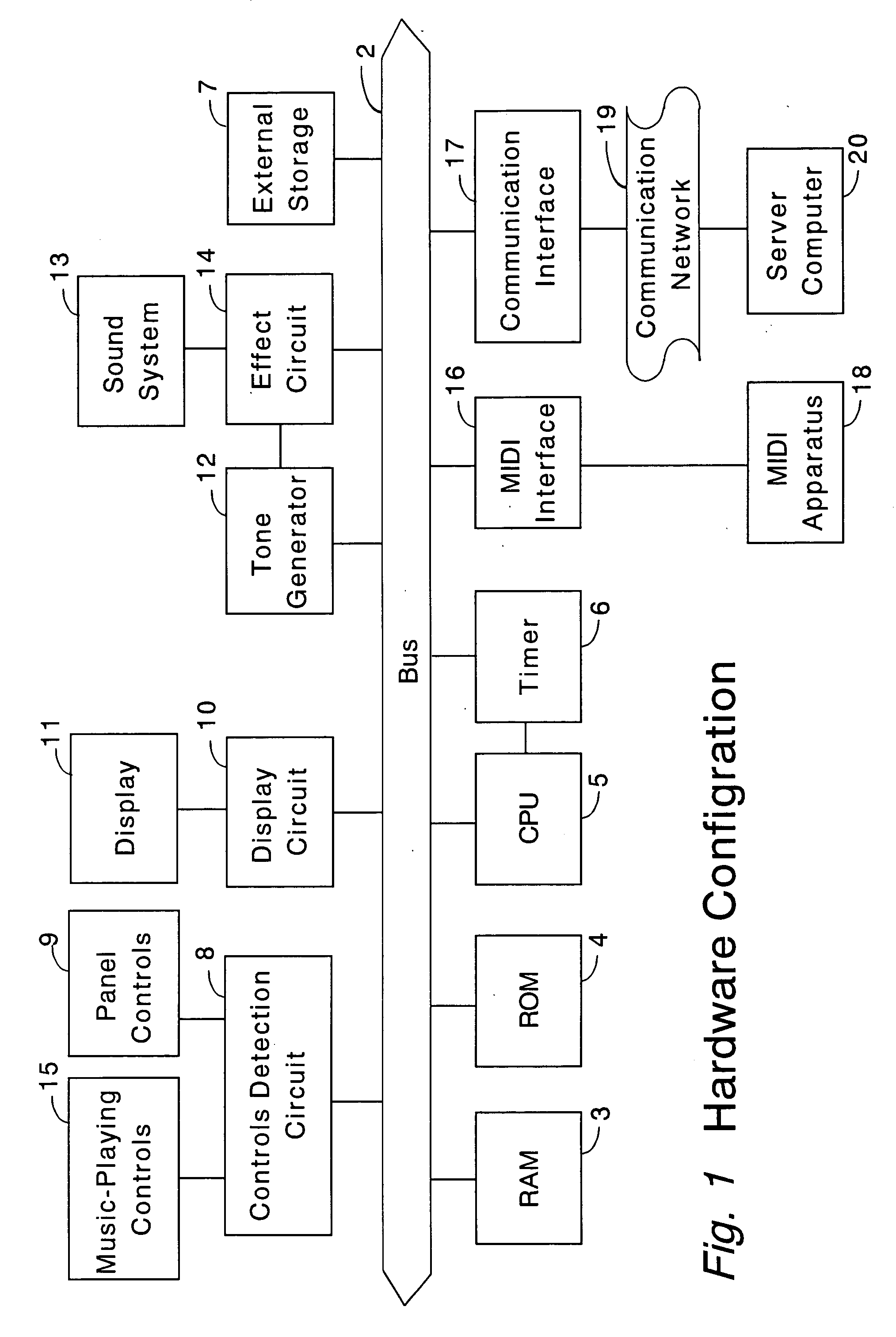Assistive apparatus, method and computer program for playing music
a technology of computer program and accompaniment, applied in the field of accompaniment apparatus, method and computer program for playing music, can solve the problems of not necessarily making the most of the player's feeling, generation of notes or notes which may not go well with the concurrently generated accompaniment tones, and deterioration of the natural sound of the acoustic field
- Summary
- Abstract
- Description
- Claims
- Application Information
AI Technical Summary
Benefits of technology
Problems solved by technology
Method used
Image
Examples
example 2
[0182] The case where the chord "GM7" (G major seventh) is played in the chord key range:
[0183] 1) It is assumed that the user plays (i.e. depresses) "F3" key (NTi) in the chord key range, while there is no other keys being depressed and there is no preceding key-on time stored.
[0184] 1a) For this single key depression, the table TB shows in the row of "M7" the first priority "1" at the note distance "11" (this note is "B" for the root of "C," but "F#" for the root of "G") and then the note "F#3" is outputted as a converted note NTc and in turn as an output note NTo via the steps S4-S6. The current note information is NTo, i.e. "F#3." 1b) After the note "F#3" is generated, the key-on time of the actually depressed key "F3" is stored as the preceding key-on time, and also "F3" is stored as the preceding depressed key.
[0185] 2) It is then assumed that the user further depress the key "E3" in the chord key range almost simultaneously (i.e. with a time difference less than 80 ms) with t...
PUM
 Login to View More
Login to View More Abstract
Description
Claims
Application Information
 Login to View More
Login to View More - R&D
- Intellectual Property
- Life Sciences
- Materials
- Tech Scout
- Unparalleled Data Quality
- Higher Quality Content
- 60% Fewer Hallucinations
Browse by: Latest US Patents, China's latest patents, Technical Efficacy Thesaurus, Application Domain, Technology Topic, Popular Technical Reports.
© 2025 PatSnap. All rights reserved.Legal|Privacy policy|Modern Slavery Act Transparency Statement|Sitemap|About US| Contact US: help@patsnap.com



